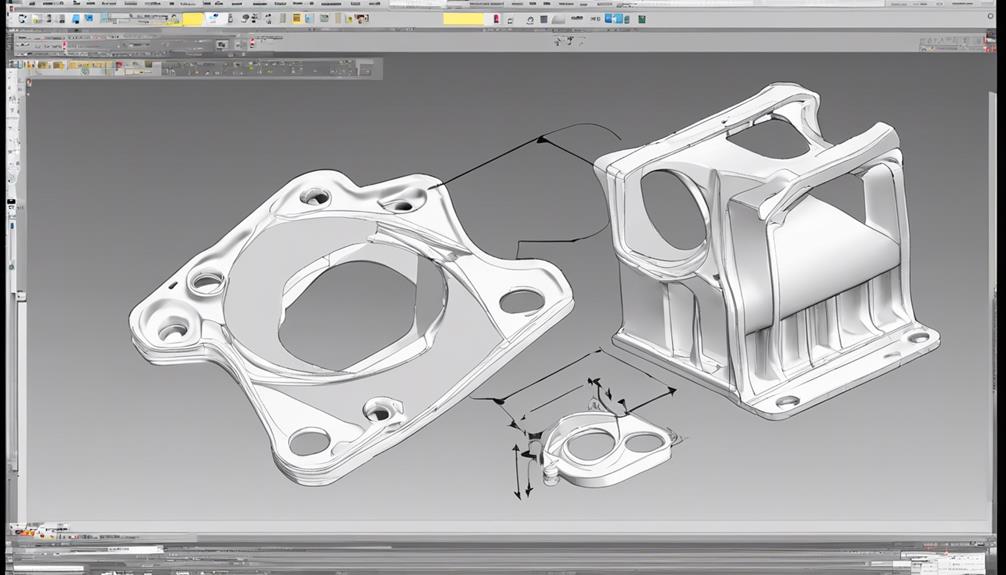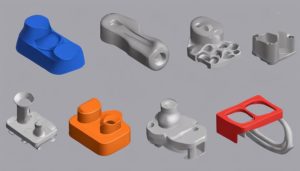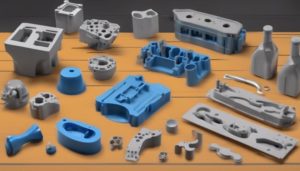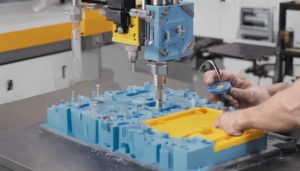Mastering the fundamentals of injection molding involves precise plastic injection into molds. Consider heating resin pellets, cooling channels, Shot Size, and Sprue. Design essentials include Draft Angles, Wall Thickness, and Gate Type. Select suitable resins like ABS, Polycarbonate, or Nylon based on needs. Enhance finishes using techniques such as ultrasonic welding or textured surfaces. Implement ISO standards, First Article Inspection, and scientific molding for quality. Understanding these basics is essential for successful part design. Mastering these principles lays a strong foundation for creating effective injection molded parts.
Understanding Injection Molding Basics
Injection molding, an essential manufacturing process, involves the precise injection of molten plastic into a mold cavity to produce accurate plastic parts efficiently. The process begins with heating plastic resin pellets to a molten state, which are then injected into the mold cavity. Cooling channels within the mold help in solidifying the plastic material to form the desired shape of the part.
Key components such as the Shot Size, determining the amount of plastic required for the part, and the Sprue, the entry point for plastic into the mold, play vital roles in the process. Injection molding is known for its precision and efficiency, making it a preferred choice for mass production of plastic parts across various industries.
The ability to create intricate designs and consistent quality makes injection molding a versatile method for manufacturing a wide range of plastic components.
Key Design Principles for Beginners
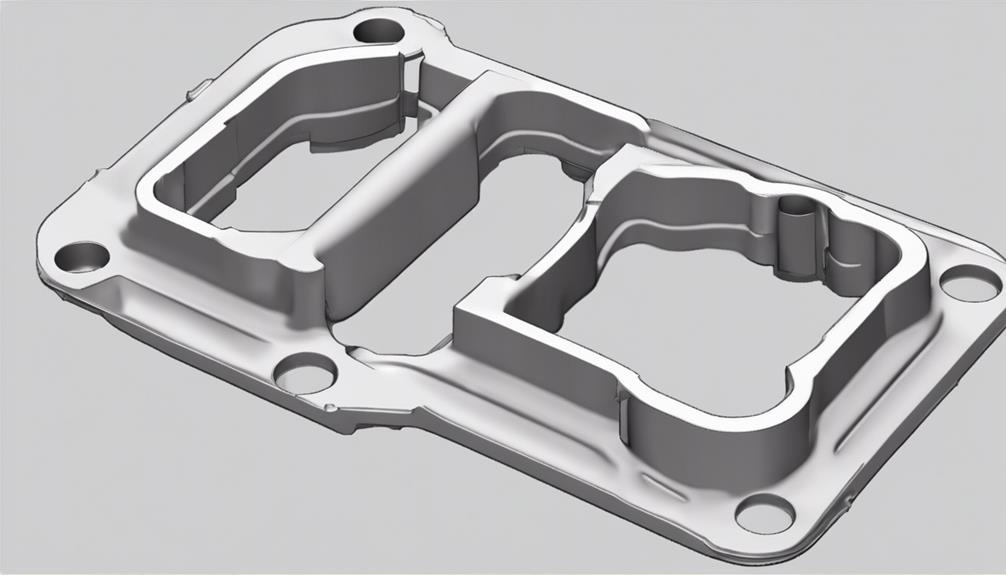
For beginners delving into injection molding design, mastering key design principles is essential to ensuring successful part production and quality outcomes. Understanding draft angles and radii is vital to facilitate part release and optimize material flow during injection. Proper wall thickness management is necessary in preventing defects like sink marks and ensuring overall part integrity. Incorporating features such as ribs and gussets into part design can enhance structural strength and mitigate issues like sink and warp. Employing the core-cavity approach in mold design not only saves time but also helps maintain consistent wall thickness throughout the part, improving moldability. Additionally, selecting the appropriate gate type, such as tab gates or hot tip gates, plays a significant role in determining part aesthetics and production efficiency. By adhering to these fundamental principles, beginners can create injection-molded parts that meet quality standards and exhibit excellent performance.
| Design Principle | Importance |
|---|---|
| Draft angles and radii | Facilitates part release and ensures proper material flow |
| Wall thickness | Prevents defects like sink marks and maintains part integrity |
| Ribs and gussets | Enhance part strength and reduce issues such as sink and warp |
| Core-cavity approach | Saves time, maintains wall thickness, and improves part moldability |
Selecting Suitable Injection Molding Resins
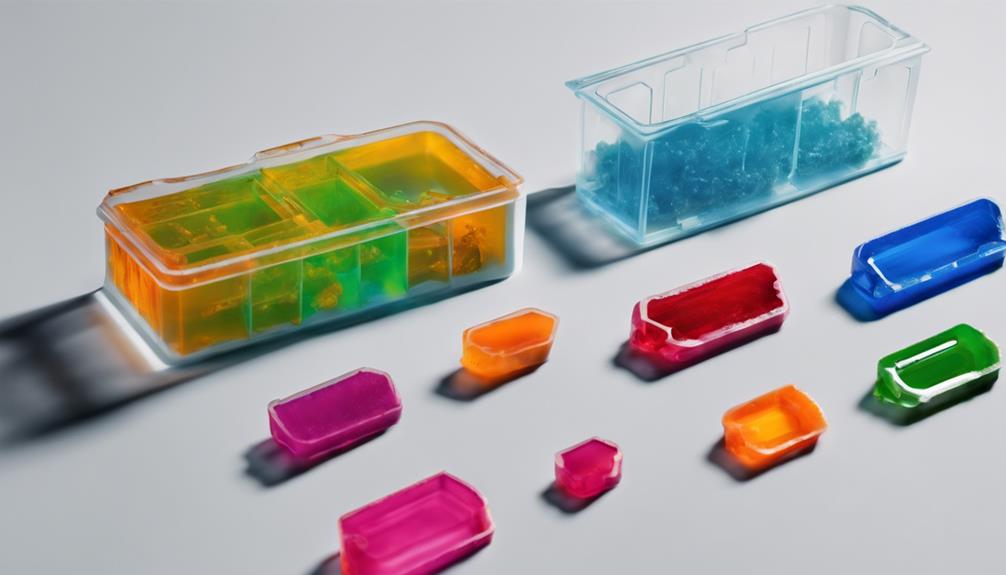
When selecting the appropriate resin for injection molding, evaluating key properties such as strength, flexibility, and heat resistance is vital. Different resins offer varying characteristics that can significantly impact the performance and suitability for specific applications. Here are some common injection molding resins and their key properties:
- ABS (Acrylonitrile Butadiene Styrene)
- Known for its good strength and impact resistance.
- Offers excellent surface finish capabilities.
- Suitable for a wide range of applications due to its versatility.
- Polycarbonate
- Provides high impact strength and heat resistance.
- Transparent and lightweight, making it ideal for applications requiring clarity.
- Often used in industries such as automotive and electronics.
- Nylon
- Offers high strength, flexibility, and chemical resistance.
- Suitable for applications requiring durability and toughness.
- Commonly used in gears, bearings, and other mechanical components.
In addition to these, specialized resins like PEEK (Polyether Ether Ketone) and TPU (Thermoplastic Polyurethane) cater to specific needs such as high heat resistance and flexibility, respectively.
When selecting a resin, considerations should also include factors like cost, availability, and the desired characteristics of the final part. Conducting thorough material testing and analysis is essential to make sure the chosen resin meets the performance requirements and quality standards for the molded part.
Enhancing Surface Finishes for Parts
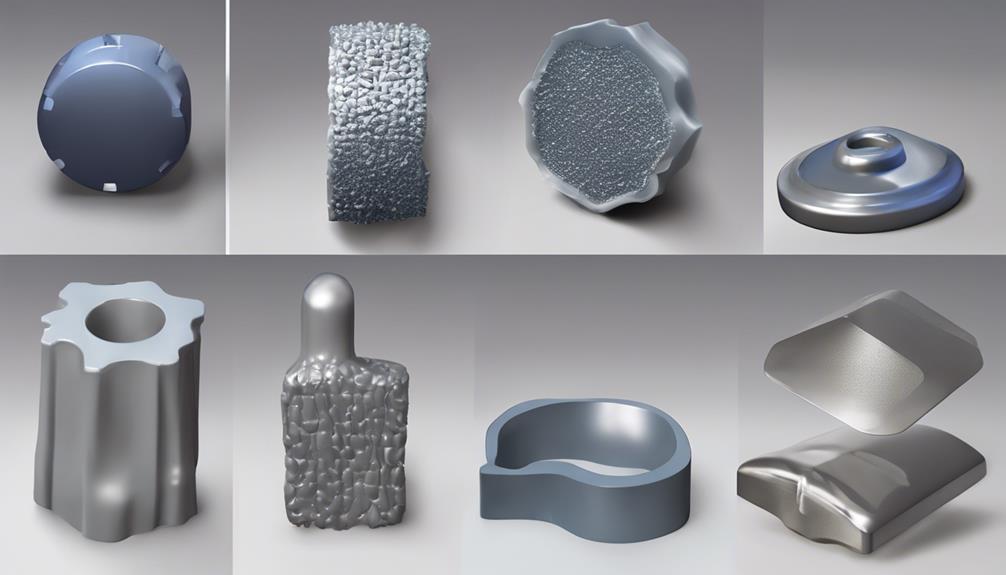
To enhance the aesthetic appeal and functionality of injection molded parts, various techniques can be employed to improve surface finishes. Surface finishes in injection molding can vary from high gloss to matte or textured finishes.
Techniques such as ultrasonic welding, pad printing, laser engraving, and pickouts play an important role in enhancing these finishes. Textured surfaces not only add visual interest but can also improve the grip and overall aesthetics of molded parts.
It is essential to recognize that surface finishes greatly impact the look, feel, and functionality of the final product. By ensuring proper surface finishes, the quality and marketability of injection molded parts can be elevated.
Hence, selecting the appropriate finishing techniques is crucial in achieving the desired outcome for the parts produced through injection molding processes.
Implementing Quality Systems for Success
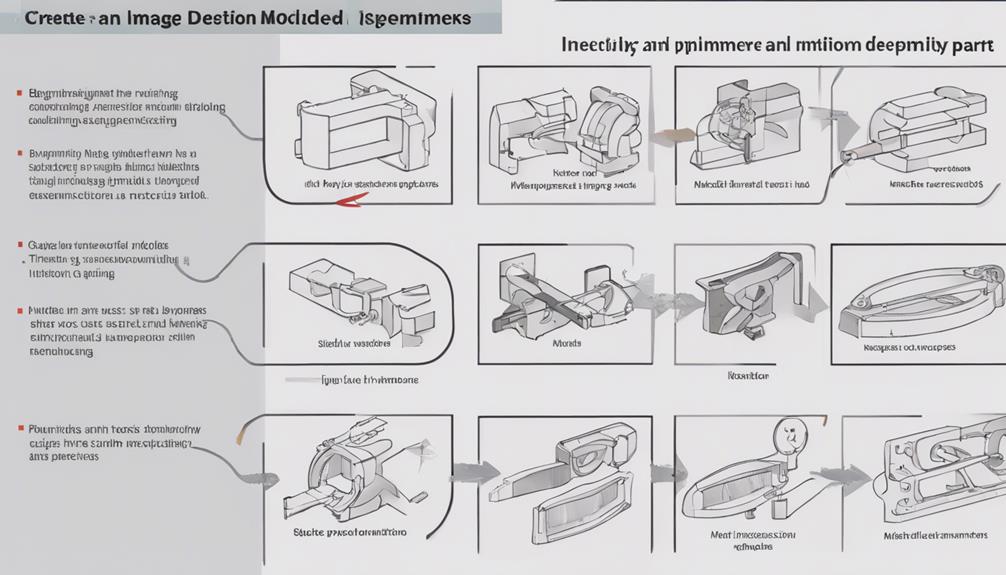
In the domain of injection molding, the successful implementation of quality systems, such as ISO 13485 for medical applications, is vital for ensuring adherence to industry standards and achieving consistent part quality. Quality systems play a pivotal role in maintaining compliance and upholding the required standards in the production process.
To emphasize the importance of implementing quality systems effectively, consider the following key points:
- First Article Inspection and PPAP: These quality inspection processes are essential for verifying part quality and consistency before full production runs, ensuring that the initial parts meet all specified requirements.
- Scientific Molding Techniques: Utilizing scientific molding techniques helps standardize processes, optimize parameters, and enhance production efficiency, contributing to improved part quality and consistency.
- Consulting Applications Engineers: Seeking guidance from experienced applications engineers can provide valuable insights and assistance in implementing effective quality systems tailored to the specific requirements of injection molding processes, thereby ensuring industry standards are met and maintained.
Frequently Asked Questions
How Do I Get Started With Injection Molding?
To get started with injection molding, begin by understanding the fundamental principles of the process. Research various plastic materials suitable for injection molding applications. Consider design aspects like draft angles and wall thickness. Explore surface finishes and color options.
Consult with experienced engineers or manufacturers for guidance on designing your first injection molded part. This initial groundwork will help you navigate the complexities of injection molding more effectively.
How to Design for Injection Molding?
Designing for injection molding requires thorough consideration of draft angles, ideal wall thickness based on resin type, and incorporating structural elements like ribs and gussets for strength. Employing core-cavity designs and selecting appropriate gate types contribute to efficiency and cost-effectiveness.
Anticipating challenges such as sink, warp, or voids, and addressing them preemptively guarantees a successful injection molding process. Attention to detail and adherence to best practices are essential for designing high-quality injection molded parts.
What Are the 5 Steps of Injection Molding?
Injection molding typically involves five main steps:
- Clamping: The mold halves are clamped together under high pressure.
- Injection: Molten plastic resin is injected into the mold cavity and left to cool and solidify.
- Dwelling or Cooling: The molten plastic is allowed to cool and solidify within the mold.
- Mold Opening: Once solidified, the mold opens.
- Ejection: The finished part is ejected, and any excess material is trimmed off.
This process leaves a completed part ready for further processing or assembly.
What Is the Rule of Thumb for Injection Molding?
The rule of thumb in injection molding dictates applying 1 degree of draft per 1 inch of cavity depth to facilitate part release, enhance moldability, and prevent sticking during ejection.
Adhering to this guideline minimizes defects like sink marks and warping, promoting smoother part ejection and overall production efficiency.
Ensuring proper draft angles as per the rule of thumb is essential for consistently achieving high-quality injection molded parts.
Conclusion
To sum up, excelling in the art of designing injection molded parts demands a profound understanding of the basic principles, meticulous selection of resins, attention to surface finishes, and implementation of quality systems.
Just as a skilled sculptor meticulously shapes a masterpiece from a block of marble, a designer must carefully craft each element of the part to achieve excellent results.
With dedication and precision, one can mold ideas into tangible creations that stand the test of time.
